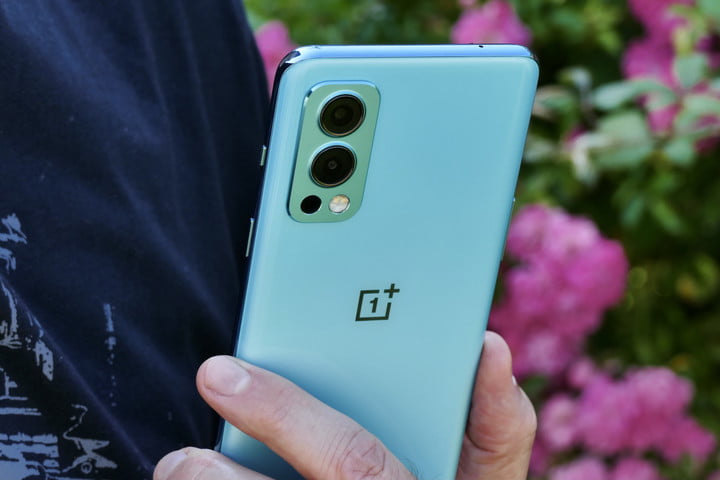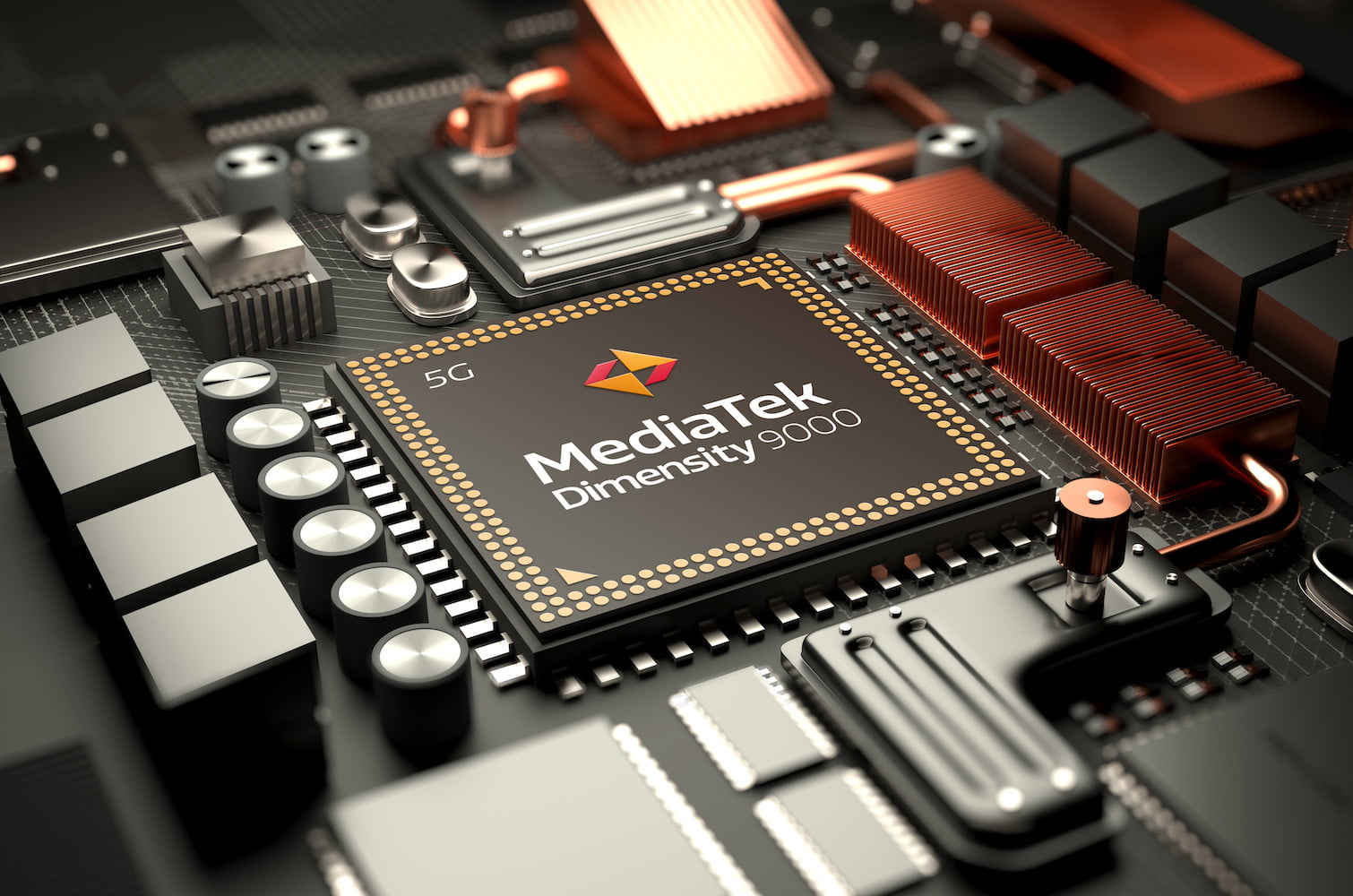“The Dimensity 9000 is a flagship chip, the first in a series of flagship chips, and MediaTek’s first real foray into the truly flagship part of the market.”
That’s how MediaTek’s Vice President of Corporate Marketing, Finbarr Moynihan, described the new Dimensity 9000 to in an interview ahead of the company’s annual summit taking place in California this week. The company is better known for its mid-to-high range chipsets at the moment, so to mark the jump into flagship territory, it has launched the most technically advanced phone chip we’ve seen yet.
Dimensity 9000
The Dimensity 9000 is the first smartphone chip to be built using a 4nm process, and the first to use the ARM Cortex X2 core, which is based on the recently announced ARM V9 architecture. The ARM Cortex X2 runs at up to 3.05GHz, and is joined by three 2.85GHz Cortex A710 cores and four Cortex A510 cores. For the graphics, the Dimensity 9000 is the first to use ARM’s Mali G710 Graphics Processing Unit (GPU), and Mediatek’s AI Processing Unit (APU) has been upgraded with four performance cores and two flexible cores. Additionally, the Dimensity 9000 will have 14MB total cache, putting it close to PC-level chipsets, but in a smartphone.
An 18-bit Image Signal Processor (ISP) will be able to support cameras with up to 320-megapixels, and record 4K resolution video with HDR on three cameras at the same time. The GPU will support raytracing ready for when game studios introduce the cutting-edge graphics tech to mobile games, and it will also support screens with a refresh rate up to 180Hz. On the connectivity side the Dimensity 9000 is the first with Bluetooth 5.3, and with a 5G modem operating on the latest 3GPP Release 16 standard.
Moynihan put all this into some context, saying:
“All together, the Dimensity 9000 should match the Apple A15 Bionic [which is built using a 5nm process] in multi-core benchmark tests, and reach an AnTuTu score of above a million for the first time.”
Building the chip
What benefits will a smartphone chip built using a 4nm process provide for us as phone users, and how much of a step forward is it over what we have now? Unless you’re deeply knowledgeable about the world of semiconductors, the benefits of owning a phone with a chip built using a 4nm process probably won’t be obvious. Moynihan explained more, and also spoke about how much of a step forward it is over what we have now.
“These chips are massively complicated,” he said about the challenge of making the Dimensity 9000. “Being next to TSMC [the foundry that makes the chips] in Taiwan helps, as it does require very close collaboration. Seven-nanometer chips were a major node for TSMC and 6nm chips leverage that same process, but bring advantages either in slightly smaller sizes and slightly better power consumption. Five-nanometer is similar, and there’s a lot of shared technology between the five and 4nm process, but 4nm brings some power and speed advantages and we’re on the bleeding edge of that.”
What will this mean for phones powered by the Dimensity 9000? The 4nm chip complete with all its advancements is more powerful than existing flagship phone processors, and will be more power efficient too. Because it’s the first to use an ARM Cortex X2, it can currently only be compared to chips with the Cortex X1, where MediaTek estimates a 35% performance boost and a similar level of power efficiency and graphics performance gains. The decision to invest in a higher cache will also prove beneficial, with an expectation that it will boost performance by 7% and reduce bandwidth for more efficient power consumption.
“It’s quite a big step forward, but there will be a farer comparison when true competing products come out next year. That said, based on our architecture and TSMC’s process, we think we will maintain power efficiency advantages next year, but the performance gap may close,” Moynihan said.
The Dimensity 9000 also supports MediaTek’s Dimensity 5G Open Resource Architecture (DORA) program, where manufacturers can customize the chip to better suit hardware and software needs.
Continued success
The introduction of the Dimensity 9000 is a confident move from MediaTek, which as a company has been enjoying considerable success recently.
“In the third quarter last year MediaTek took the number one mobile system-on-a-chip (SoC) market share position, and we haven’t given it up,” Moynihan said. “We’ve grown and expanded on that in the last few quarters and we think we’re trending towards about 43% market share overall for the year. The main driver for that has been the 4G to 5G transformation. We’ve seen our 5G shipments more than triple this year. We think we’re going to end the year with about 28% market share overall in 5G.”

In 2019 it posted $8 billion in revenue, and this year expects that figure to more than double to around $17 billion, with 57% of this coming from its mobile phone (feature phones and smartphones) business, showing how important it is to the company. Outside of phones, MediaTek is the leader in smart TV chips, and also supplies a wealth of smart home products, laptops, and hardware such as Wi-Fi routers.
In the U.S. 35% of Android phones shipped have MediaTek power, helped by Samsung and Motorola now producing devices with the firm’s chips, and various pre-paid phones branded by carriers like MetroPCS’s Revvl models too. Brands like OnePlus, Vivo, Oppo, and Xiaomi work with MediaTek internationally.
Next steps
The Dimensity 9000’s launch echoes a pivotal point in MediaTek’s recent history. When it introduced the Dimensity 1000 and committed to 5G in 2019, it did so at a steady pace, initially releasing phones with the chip in China and markets where MediaTek already had a strong presence. Later versions of the chip then hit the global market with phones like the OnePlus Nord 2.
“For this platform we expect China and some of the markets where the Chinese OEMs ship globally to be the dominant space. It doesn’t support mmWave, so it’s not really for the U.S. high-end market. We will have mmWave coming, but it’s further down the road,” Moynihan said, indicating it will take the same approach with the 9000 series as it did with the 1000 series.
“It’s a multi-year investment,” he continued. “You’ll see us securing a certain market share of flagships this year, and then build on that and attack the global flagship space going forward. We will be launching mmWave with U.S. carriers in 2022, probably in the high mid-range devices. We’ll build from that and expand with further generations of the Dimensity 9000. It’s a part of the market we haven’t really taken much share in the past, perhaps nibbling at the edges with things like the Dimensity 1200, but the Dimensity 9000 is in a different league. Think of it as the start of MediaTek’s journey into flagships from where we’re strong, and we’ll continue to grow from there.”
MediaTek’s major partners are already developing smartphones with the Dimensity 9000 inside, and the company expects the first devices to be announced and subsequently ship around March 2022.


